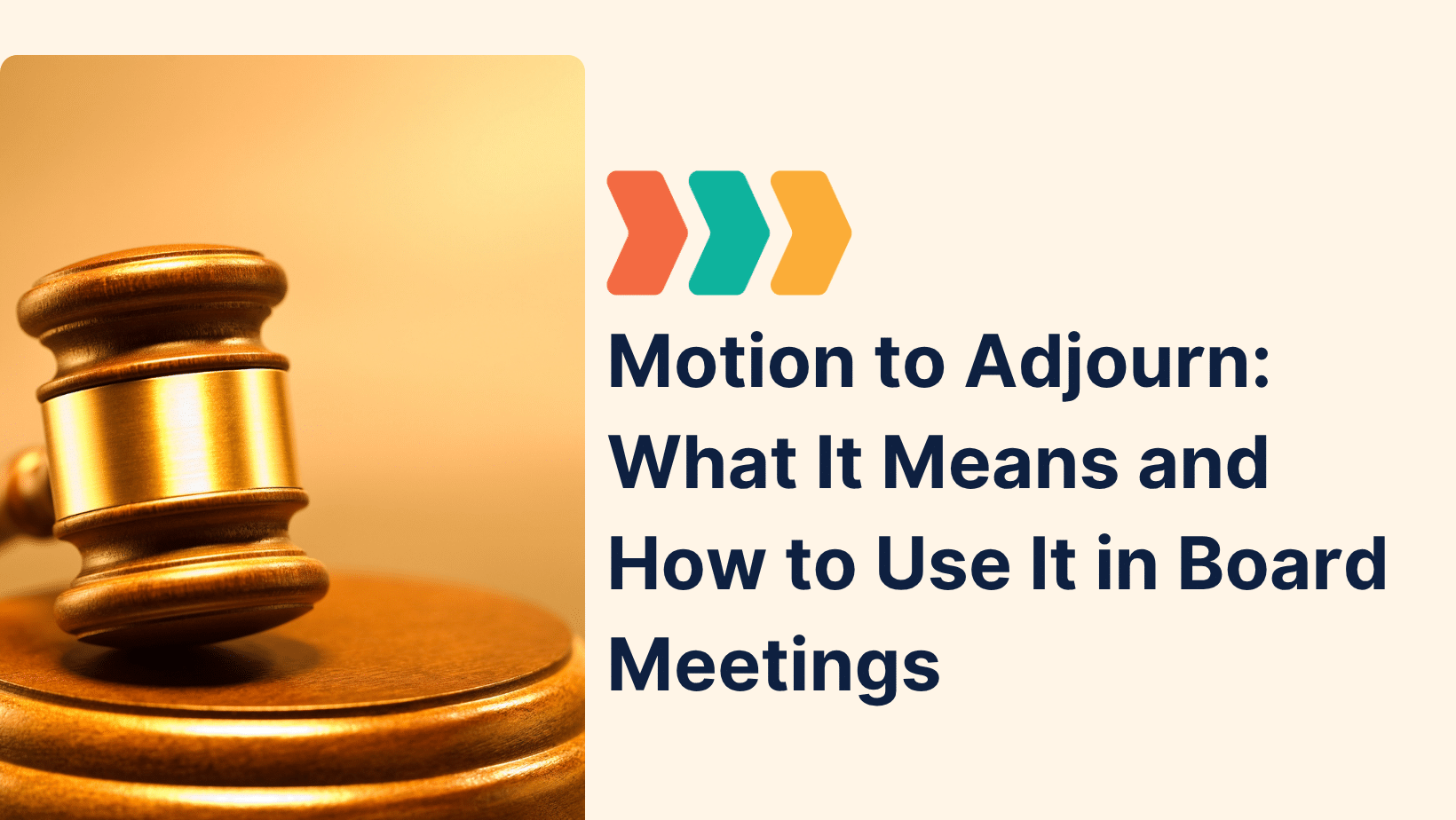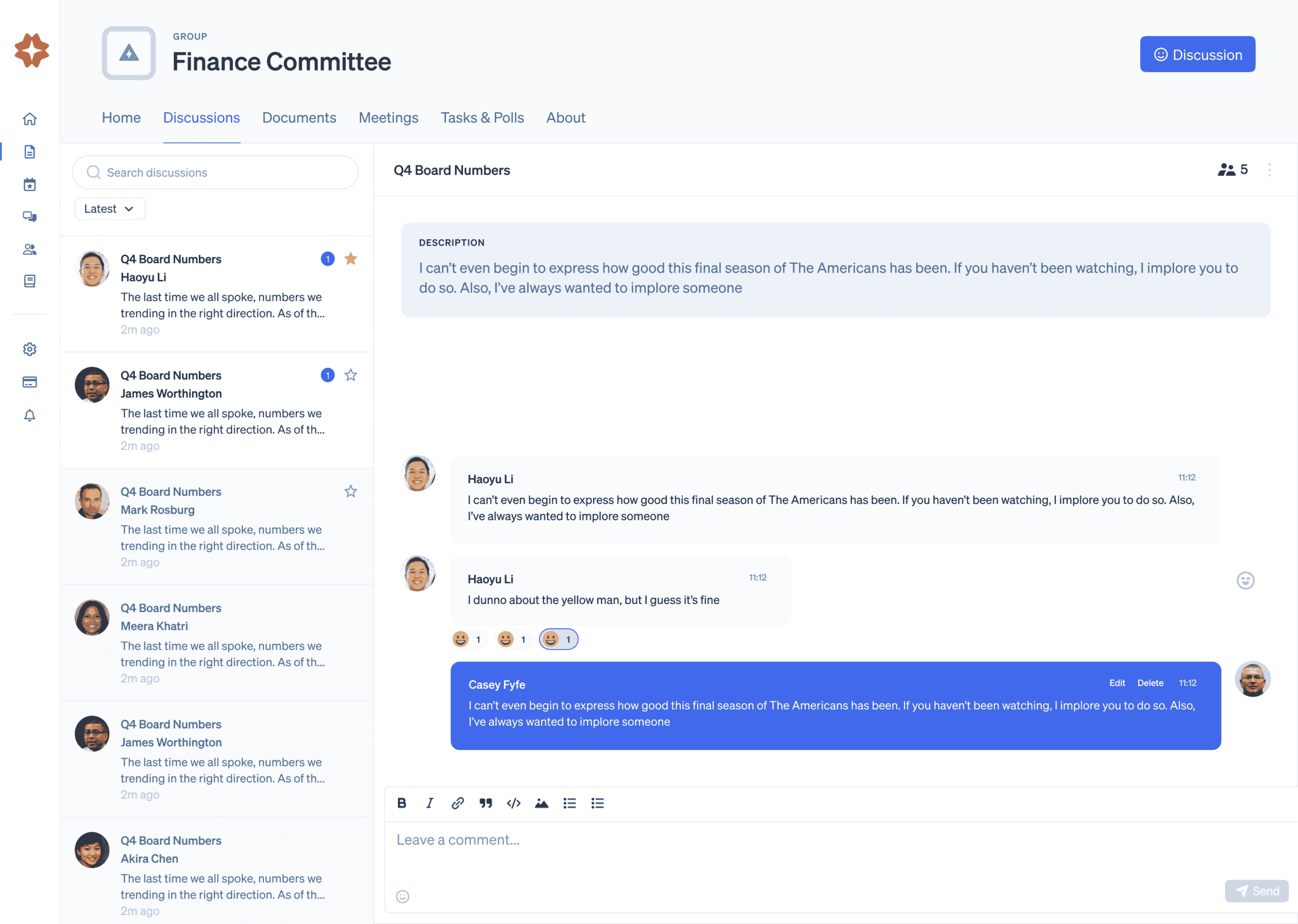Adjournment meeting procedures are a critical yet often overlooked part of effective nonprofit governance. Understanding how and when to use a motion to adjourn ensures your board meetings are orderly, time-conscious, and well-documented. Whether your’e a seasoned board chair or a new administrator, mastering this essential step in the meeting agenda can help reinforce structure and efficiency in every session.
In this article, we’ll explore what it means to adjourn a meeting, how this action plays out in real-life board meetings, and how technology like Boardable can streamline your governance workflows.
What Is a Motion to Adjourn?
A motion to adjourn is a formal proposal made by a board member to end a meeting. It is organized as a privileged motion, meaning it takes precedence over most other motions and can be made while other business is pending. If the motion is seconded and approved by a majority vote (unless otherwise specified by bylaws), the board chair will then declare the meeting adjourned.
This action formally closes the session and pauses any remaining agenda items until the next scheduled meeting or a specially called session. In board governance, understanding the use of an adjournment meeting supports smooth transitions and reinforces accountability.
“A motion to adjourn is a privileged motion, and when unqualified, it is not debatable, cannot be amended, and requires a majority vote.”
— Robert’s Rules of Order Newly Revised, 12th Edition
Why Adjournment Matters in Board Meetings
The ability to properly adjourn a meeting is more than a procedural nicety; it’s a foundational part of meeting management and governance. Here’s why it’s so important:
- Signals Closure: Adjournment marks the official conclusion of the meeting, reducing confusion about post-meeting discussions or decisions.
- Prevents Burnout: Lengthy meetings without clear adjournment points can lead to fatigue and disengaegment, especially for volunteer board members. An established adjournment time helps participants stay focused and energized.
- Ensures Record Integrity: Only decisions made before the adjournment are considered part of the official minutes record, preserving meeting integrity.
- Manages Unfinished Business: When there’s unfinished business, adjourning indicates that those items will be carried over to the next session rather than left unresolved.
How to Use a Motion to Adjourn in Practice
In most board meetings, here’s how a motion to adjourn works:
- A board member makes the motion by stating: “I move to adjourn.”
- Another board member seconds the motion.
- The board chair calls for a vote (unless it’s an automatic adjournment by agenda).
- If the majority approves, the motion is passed. The board chair declares the meeting adjourned by stating: “The meeting is adjourned.”
It’s important to note:
- A motion to adjourn cannot interrupt a speaker or be made while a vote is in progress.
- A standard motion to adjourn is not open for debate or amendments. However, if the motion includes a specific time or condition (e.g., “I move to adjourn at 3:00 PM”), it is considered a main motion, which allows for debate and amendments to support proper planning. A main motion introduces new business for discussion and decision and must wait until no other motions are being considered.
- Your organization’s bylaws or policies may include specific rules regarding adjournment, quorum, or meeting continuation.
Common Misconceptions About Adjournment
“Only the chair can adjourn the meeting.”
Not true, The motion to adjourn must be made and seconded by board members and approved by a vote. The chair facilities, but does not act unilaterally.
“Once the meeting is adjourned, all business is done.”
Adjournment pauses current business, but unfinished business carries forward to the next scheduled meeting or special session.
“We can discuss or debate the motion to adjourn.”
Under Robert’s Rules of Order, a motion to adjourn is a privileged motion and is generally not debatable unless it includes a specific condition or time (e.g., “I move to adjourn at 3:00 PM”), in which case it becomes a main motion and may be debated or amended.
How Boardable Simplifies Meeting Adjournment and Agenda Management
Boardable’s board management software allows organizations to manage every part of the meeting agenda, including the adjournment meeting process:
- Pre-define agenda items like “Adjournment” so the meeting flows predictably.
- Track unfinished business and roll it over to the next meeting.
- Record motions and votes with time-stamped documentation, including those to adjourn.
- Host virtual or hybrid meetings using built-in tools like Boardable Video, which support real-time agendas, minute-taking, vote tracking, and the ability to officially adjourn the meeting all in one platform.
Boardable ensures that board governance doesn’t stop at the final gavel. By integrating motion management into every step of the meeting flow, Boardable keeps your board structured, transparent, and compliant from planning through post-meeting follow-up, helping you save time and eliminate confusion.
Understanding how to properly use a motion to adjourn is an essential part of running effective board meetings. Whether you’re dealing with a packed meeting agenda, managing unfinished business, or just trying to end on time, following correct adjournment meeting procedures promotes trust and efficiency. With Boardable, board administrators and chairs can confidently guide meetings from start to finish with clarity and professionalism.




